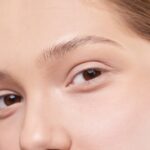COMMON BENIGN SKIN LESIONS AND SKIN GROWTHS
As doctors, we talk a lot about skin cancer – what it looks like and signs and symptoms to be aware of. This is extremely important, as with most cancers, your chances of survival are increased with early detection and treatment. Thankfully, however, most skin lesions or growths that we see are benign and of no significance other that their cosmetic appearance. Occasionally, benign lesions can become infected or inflamed and treatment is available. They can also be removed purely for cosmetic reasons. We will discuss some of the more common benign skin lesions and treatments available.
SOLAR LENTIGINES (LIVER SPOTS)
These are darkened patches of skin that can look like a mole. They range in color from tan to dark brown, usually on sun-exposed areas like the face, neck, forearms and hands. Their numbers generally increase with age. While these are benign lesions, they can change to a superficial form of melanoma, and should be watched for any change in color, surface contour, and size. Having many solar lentigines is a sign that the individual has likely had excessive sun damage to their skin and are at higher risk of sun induced skin cancer.
Treatment of solar lentigines is done for cosmetic reasons and options include bleaching creams, cryotherapy (liquid nitrogen), laser treatments, and chemical peels.
SEBORRHEIC KERATOSES
These are flesh colored, tan, brown or black elevated lesions that average 1cm in size but can be up to 3cm. They are usually oval shaped and feel greasy. They also appear “stuck on” the skin. They can appear anywhere on the skin except the palms and soles and can be present in large numbers.
Their cause is unknown, but there is a genetic predisposition in some families. They are very common in middle aged adults and increase in numbers with age.
Treatment is done if the lesions become itchy or irritated, or for cosmetic reasons. Seborrheic keratoses do not turn into cancers but sometimes are hard to distinguish from skin cancer. Thus, when there is any doubt, a skin biopsy should be taken. Treatment if desired for straight forward appearing seborrheic keratoses is usually done with cryotherapy and curettage (scraping).
ACTINIC KERATOSES (SENILE KERATOSES)
These are scaly, crusty bumps that form on sun exposed areas of the skin like the face, ears, bald scalp, neck, backs of hands and forearms, and lips. They are often red but can be skin colored or tan. It is often easier to feel them than to see them.
Actinic keratoses are often asymptomatic, but can also itch or cause a prickly or tender sensation. Most people will recognize it as a red, scaly patch that doesn’t seem heal.
Actinic keratoses are made of atypical skin cells – cells that are abnormal due to damage by ultraviolet light or other carcinogens. It is important to recognize actinic keratoses because at this stage, they are benign, but they can progress to squamous cell carcinoma of the skin.
Treatments options include cryotherapy with liquid nitrogen, topical treatments with Effudex or Aldara, chemical peels, and photodynamic therapy with Levulan.
SKIN TAGS
These are flesh colored, pinhead to grape sized and frequently found around the neck and armpits of middle aged adults. They are found more frequently in obese people and the number of the lesions can increase with age. Skin tags can occasionally become inflamed and can be bothersome when they are in areas that need to be shaved, or can get caught in necklaces.
Removal is done simply by excision, electrocautery or cryotherapy for smaller skin tags.
CHERRY ANGIOMAS
These are dilated capillaries are occur most commonly on the trunk and upper arms and legs of adults, becoming more numerous with age. The cause of cherry angiomas is not known, but they do not become cancer. They generally cause no symptoms, although they can bleed with trauma.
Treatment is done for cosmetic reasons and lasers are the most effective for these lesions.
DERMATOFIBROMAS
These are slowly growing, round to oval firm nodules that can be found at any age most commonly in the legs. They can also form in the thighs, arms, and trunk. They are a few millimeters in size to several centimeters. They can be pink to brown in color, and are usually darker in the center.
They are thought to develop as a result to trauma, and are possibly are scar-like reaction to insect bites. They do not lead to cancer.
Treatment of these lesions for cosmetic appearance is difficult in thin skinned areas like the anterior shin where they usually occur. Because the nodules are fairly deep the best way to remove them permanently is by excision. The scar left after the excision in the leg is sometimes not more cosmetically acceptable than the lesion itself. Cryotherapy will not usually be enough to remove dermatofibromas completely, but can make them smaller and less noticeable.
MOLES
The appearance of moles can vary greatly, but the moles I get asked most commonly to remove for cosmetic reasons are the ones on the face that protrude. These are usually intradermal moles and often skin colored, although they can be brown or tan.
I remove these moles usually by excision after administering local anaesthetic and use very fine suture material to close the wound. The end result is a very small scar line that is usually imperceptible. Moles can also be removed by shave excision in which the mole is cut off at the level of the skin and the skin is left to heal in on its own. This method has a higher rate of recurrence of the mole. Other treatments include removal by laser which also leaves an open area of skin that will eventually heal in.
SEBACEOUS HYPERPLASIA
These flesh to yellow colored bumps on the skin with a central dimple are enlarged sebaceous (oil producing) glands in the skin. They occur most commonly in the face, especially on the cheeks, nose and forehead of people over 30. The number of these lesions can increase with age. The cause sebaceous hyperplasia is again unknown, but these lesions are asymptomatic and do not lead to cancer.
Removal of these lesions is done for cosmetic reasons. Methods include cryotherapy, electocautery, laser treatment, photodynamic treatment with Levulan, and Accutane. This can be a difficult condition to treat if there are numerous lesions as scarring is a possible side effect of some of the treatment modalities.
MILIA
These small, pearl-like superficial domed bumps appear on the face, most commonly around the eyes, of people of all ages. It is extremely common in infants and usually disappears on its own. In older children and adults that develop the lesions, they usually persist.
They develop when skin cells become trapped instead of exfoliating naturally. The trapped cells become walled off into a tiny cyst just below the surface of the skin. These cysts are completely asymptomatic and have to malignant potential. However, many people find these lesions to be cosmetically undesirable.
They can be caused by using heavy skin care products or make-up that is comedogenic. Prolonged sun damage, blistering skin disorders and genetics are other causes.
Treatment involves regular exfoliation of the skin with creams containing alphahydroxy acids or retinoic acid, chemical peels, or microdermabrasion. Persistent milia are treated simply in the doctors office by incision and expressing out the contents.
SYRINGOMAS
Syringomas are harmless sweat duct tumors often found in clusters on the eyelids. They skin colored or yellowish firm rounded or flat topped bumps 1 – 3 mm in diameter.
They start to appear in adolescence and can become more numerous with time. They are more common on women than men.
As they are completely asymptomatic, removal is done for cosmetic reasons. Electrocautery can be done but many result in small scars. Carbon dioxide laser resurfacing is effective but is associated with a more substantial down time.
























